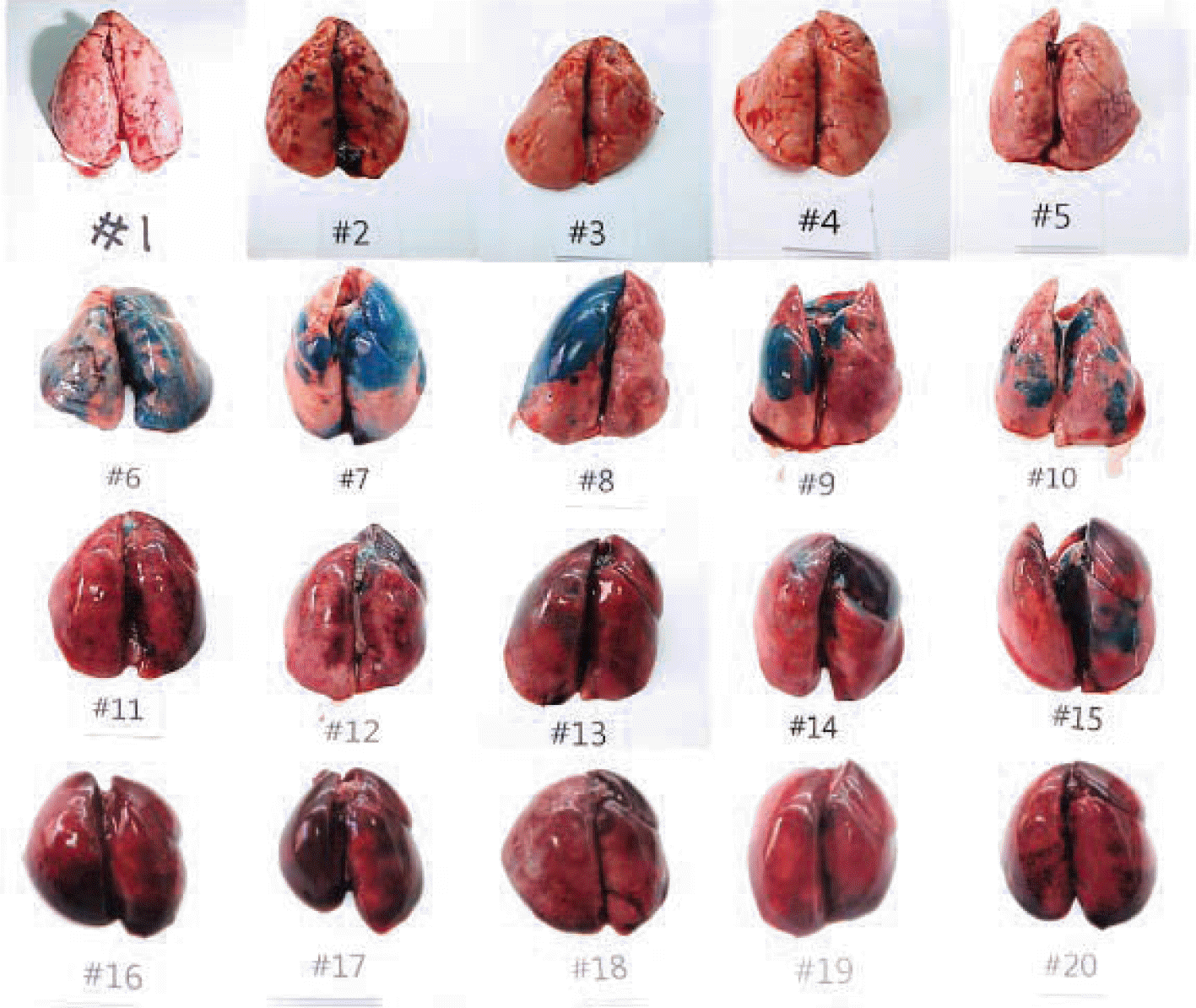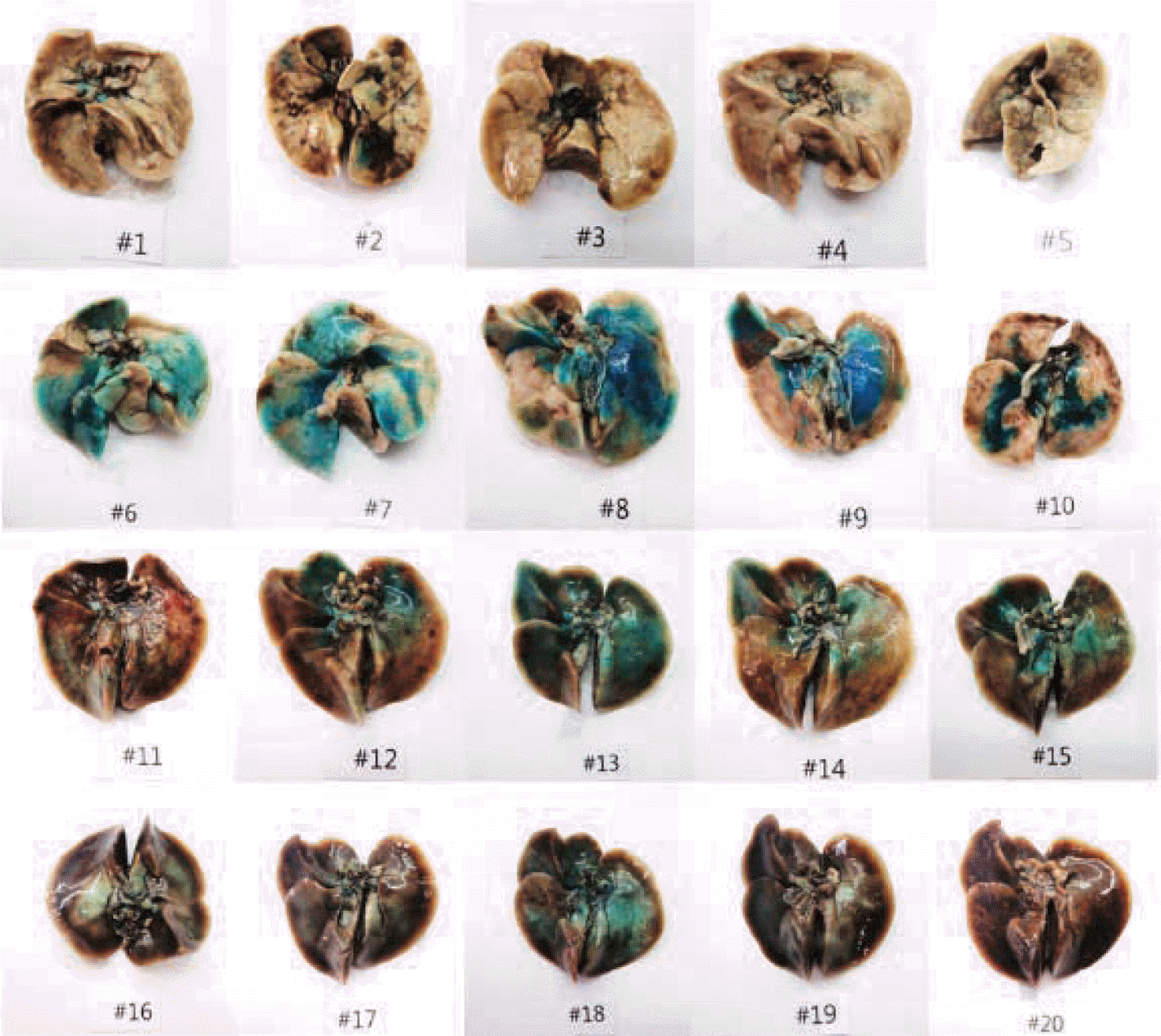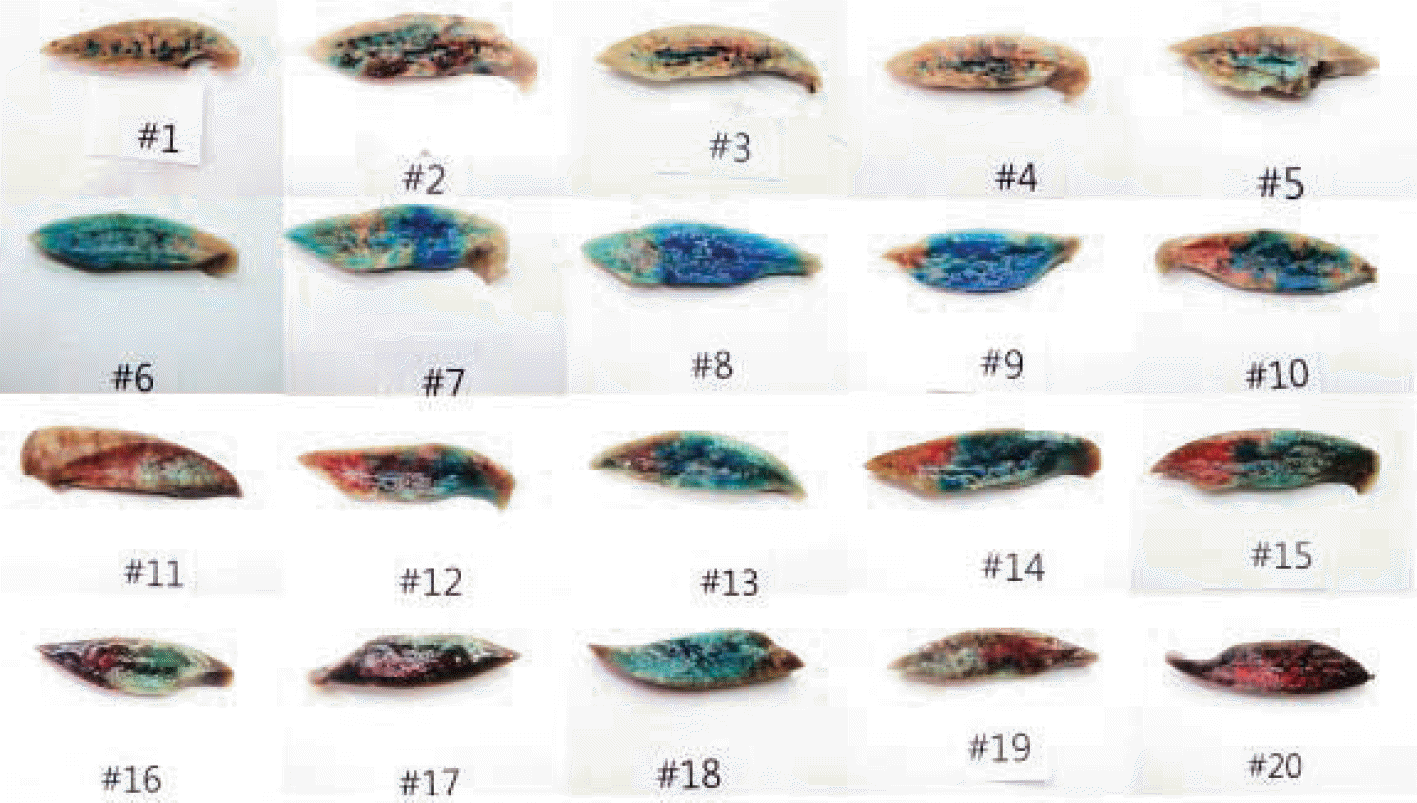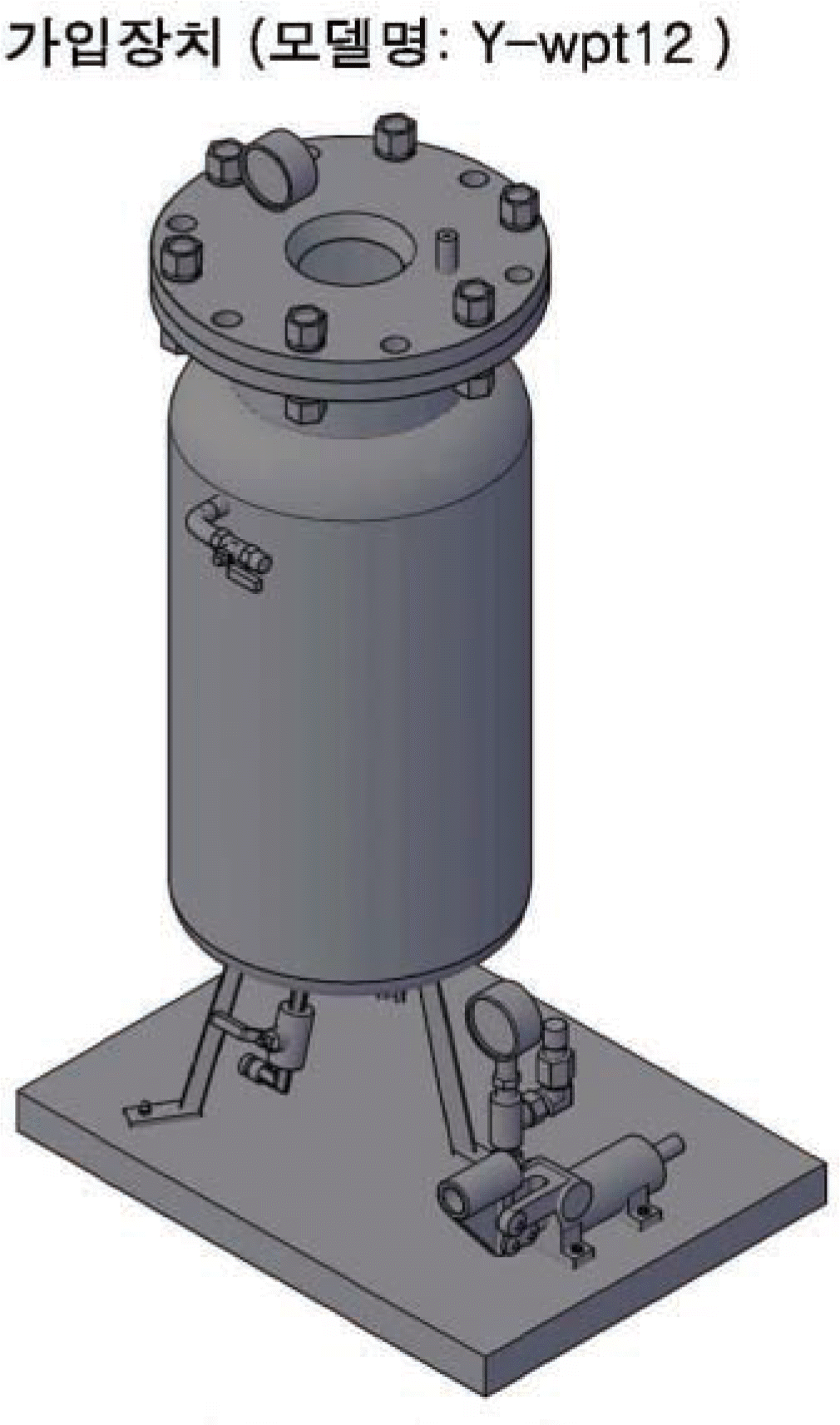Abstract
Drowning is a leading cause of accidental deaths worldwide, but its pathological diagnosis remains a challenge for forensic pathologists owing to a lack of pathognomonic findings in drowning deaths and inconclusive autopsy findings caused by postmortem changes. The aim of the present study was to investigate the pathway taken by inhaled drowning medium through the airway after death in a variety of experimental conditions, including underwater pressurization. We used methylene blue dye to monitor the spread of drowning medium to the lungs. Results of theses experiments demonstrated that it is possible for a significant amount of downing medium to enter the airway during immersion after death. Our results suggest that autopsies of immersed bodies and interpretation of these findings should be performed with special care.
REFERENCES
1. Layon AJ, Modell JH. Drowning: Update 2009. Anesthesiology. 2009; 110:1390–401.
2. Na JY, Park JP, Choi MS, et al. The statistical analysis of legal autopsies in 2011. Korean J Leg Med. 2012; 36:165–73.
3. Ludes B, Quantin S, Coste M, et al. Application of a simple enzymatic digestion method for diatom detection in the diagnosis of drowning in putrified corpses by diatom analysis. Int J Legal Med. 1994; 107:37–41.

4. Fornes P, Pe ′pin G, Heudes D, et al. Diagnosis of drowning by combined computer-assisted histomorphometry of lungs with blood strontium determination. J Forensic Sci. 1998; 43:772–6.

5. Piette MH, De Letter EA. Drowning: still a difficult autopsy diagnosis. Forensic Sci Int. 2006; 163:1–9.

6. Lunetta P, Modell JH, Sajantila A. What is the incidence and significance of “dry-lungs” in bodies found in water? Am J Forensic Med Pathol. 2004; 25:291–301.

7. Hong JW, Lim SC, Kim YS. Comparison of pathologic findings by seawater or freshwater drowning on the experimental animals. Korean J Leg Med. 2013; 37:119–28.
Fig. 2.
Gross appearance of the animal lungs shows very different grade of dye diffusion depending on the experimental conditions.

Fig. 3.
Ventral surface of animal lungs shows similar pattern and grade of dye diffusion compared to dorsal surface on the experimental conditions (after formalin fixation).

Fig. 4.
Longitudinal section of the left lungs shows more clear-cut comparison of dye diffusion on the experimental conditions (after formalin fixation).

Fig. 5.
The photograph of histology reveals alveolar edema, alveolar hemorrhage and vascular congestion in the rat’ s lung which is immersed and pressurized after death (H & E, a: × 200, b: × 400).

Table 1.
The Summarization of Experimental Result by Groups
| Group | Weight | Grade | ||
|---|---|---|---|---|
| No. | Body | Lung | ||
| 1 | Drowning group | 291.0 | 1.4 | 1+ |
| 2 | 286.4 | 1.5 | 1+ | |
| 3 | 284.3 | 1.5 | 1+ | |
| 4 | 301.7 | 1.4 | 1+ | |
| 5 | 293.2 | 1.5 | 1+ | |
| Average | 291.3 | 1.46 | ||
| 6 | PM∗ intratracheal instillation | 293.5 | 3.0 | 4+ |
| 7 | group | 307.2 | 3.2 | 3+ |
| 8 | 297.3 | 3.3 | 2+ | |
| 9 | 284.0 | 3.4 | 2+ | |
| 10 | 288.5 | 3.8 | 2+ | |
| Average | 294.1 | 3.34 | ||
| 11 | PM submersion group for | 287.2 | 3.8 | 1+ |
| 12 | 1hr | 289.0 | 3.4 | 2+ |
| 13 | 294.4 | 3.7 | 2+ | |
| 14 | 282.0 | 3.5 | 2+ | |
| 15 | 290.5 | 3.7 | 2+ | |
| Average | 288.6 | 3.62 | ||
| 16 | PM submersion group for | 304.3 | 2.6 | 1+ |
| 17 | 24hr | 290.6 | 3.0 | 1+ |
| 18 | 291.5 | 2.4 | 2+ | |
| 19 | 284.0 | 2.4 | 1+ | |
| 20 | 290.6 | 3.2 | 1+ | |
| Average | 292.2 | 2.72 | ||
| 21 | Negative group | 289.2 | 1.5 | 0 |
| 22 | 311.7 | 1.6 | 0 | |
| 23 | 306.0 | 1.4 | 0 | |
| 24 | 294.0 | 1.3 | 0 | |
| 25 | 302.5 | 1.4 | 0 | |
| Average | 300.7 | 1.44 | ||




 PDF
PDF ePub
ePub Citation
Citation Print
Print



 XML Download
XML Download